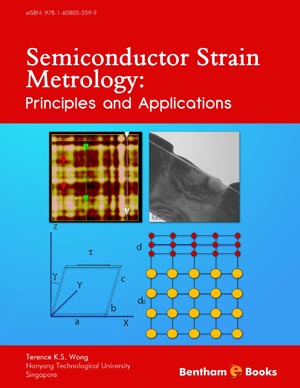Abstract
In this part, we describe three strain metrology techniques that make use of the interaction of light with a sample to measure strain. The optical interactions are: (i) reflection, (ii) polarization change and (iii) inelastic scattering. Although the interactions used are different for each technique, they share a common principle that they are based on the so-called morphic effects of semiconductors. The morphic effects are basically perturbation effects by external influences such as stress or pressure on the crystal structure and the band structure of a semiconductor. By measuring the changes in the band structure, it is possible for instance to infer the magnitude of the strain that causes the perturbation.
All three techniques make use of visible and ultraviolet light and are non-destructive and non-invasive. They therefore involve little or no sample preparation and are well suited to the routine process monitoring of strained semiconductor substrates such as strained silicon and strained silicon on insulator. However, the techniques are mainly ex situ and with the exception of the Raman spectroscopy technique cannot be applied to individual transistors on wafer. The tip-enhanced Raman technique with higher spatial resolution is at present under development and is not yet ready for manufacturing.





















